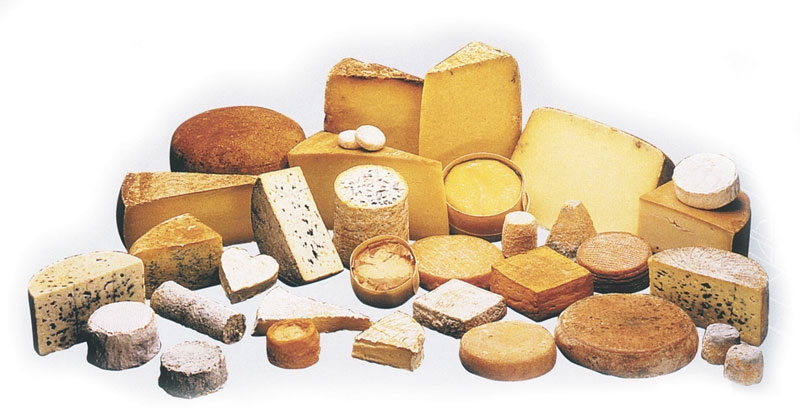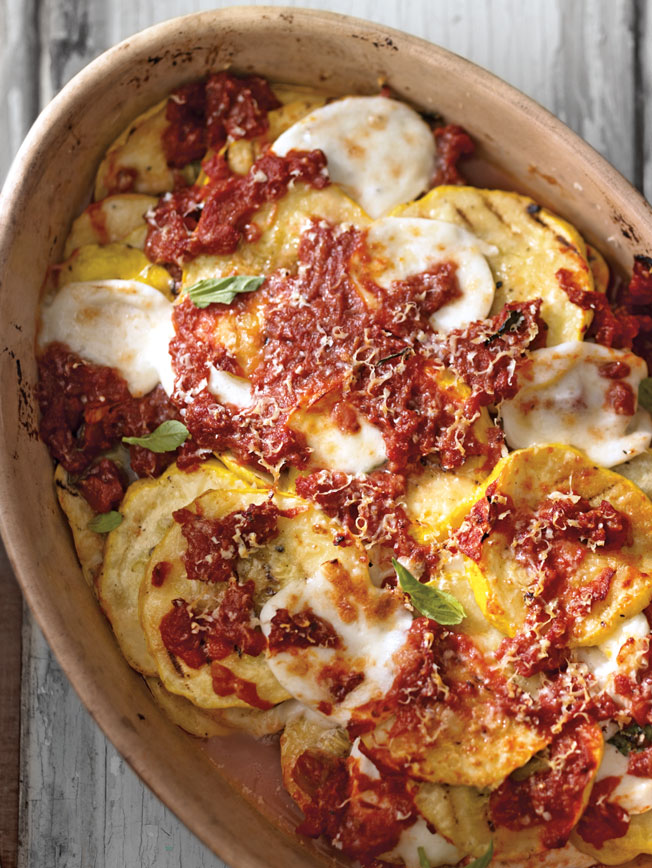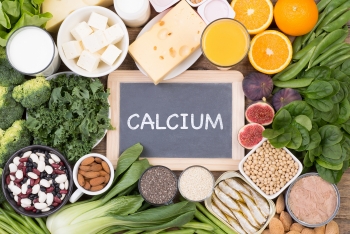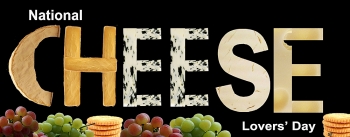National Cheese Day (June 4th): Meaning, Celebration
 |
| A wide variety of cheeses |
| Table of Contents |
Unlike other food holidays, cheese doesn't sit on its own on many menus. However, it's a big piece of many menu items. So, prepare to celebrate National Cheese Day on June 4 by doing what you already know how to do so well: Eating cheese.
Cheese
Cheese is a traditional milk-based dish. The type and flavor of cheese that is available depend on a number of factors, including the country of origin, the animal's diet, pasteurization status, ageing period, and the presence of mold and bacteria. Cheese can therefore be found in a variety of flavors, textures, and shapes. Goat, cow, sheep, and buffalo milk can all be used to make cheese. The cheese's distinct flavor and texture are achieved through the use of various flavorings, including fruit, wood smoke, and spices.
The world produced 18.7 million tonnes of cheese from whole cow milk in 2014, with the United States producing 5.4 million tonnes, or 29% of the total, followed by Germany, France, and Italy. The majority of domestic cheese production is consumed within the country, so even with these enormous numbers regarding cheese production, the USA is not regarded as the largest exporter of cheese.
Cheese has many great health benefits and is high in fat, calcium, and protein, but always eat it in moderation! In our opinion, serving cheese on a platter with crackers or freshly baked bread, grapes, olives, and tomatoes is the ideal way to enjoy it.
What are the seven types of cheese?
- Fresh
- Aged fresh
- Soft white rind
- Semi-soft
- Hard
- Blue
- Flavor added
What cheeses are used on pizza?
American style pizzas typically use mozzarella, parmesan, provolone, and cheddar.
Where does cheese come from?
Cheese can be made from the milk of cows, goats, buffalo, reindeer, moose, donkies, horses, alpacas, camels, and humans.
5 Facts about cheese that will blow your mindIt’s vegan!Well, not really, but there is undoubtedly a resurgence in dairy-free cheese. Recent advances in food science have produced a wide variety of plant-based cheese substitutes that you can purchase at large supermarket chains or your neighborhood vegan butcher shop. Americans cut the cheeseDespite common belief, the United States, not Europe, is the world's largest producer of cheese, accounting for 29% of the market. The top producing nations are Italy, Germany, France, and the United States, in that order. Don’t forget the stomachRennet, which is curdled milk and complex enzymes that are present in the unweaned calves' fourth stomach, is frequently added to cheese-making processes because it is thought to produce a product that is bolder and richer in flavor. Medieval curdsThe most popular types of cheeses of today like gouda, cheddar, parmesan, and camembert, all came into vogue during or after the Middle Ages. Cheesy Moon"The Proverbs of John Heywood" from 1546 may have originated the long-standing myth that the moon is made of cheese, saying that "the moon is made of a green cheese." We now know that this is more of a metaphor than a literal interpretation, with "green" standing for the moon's youthfulness or unaging quality. |
The History of National Cheese Day
Making cheese is an age-old, and some would even argue sacred, craft. It is so old that it exists before written history. It is believed that the art of cheesemaking originated approximately 8000 BCE, following the domestication of animals. Archaeological excavations have uncovered cheese artifacts from all over the world, such as preserved cheese artifacts in Xinjiang, China, which are thought to be over 3,000 years old, and strainers coated in milk-fat molecules in Kuyavia, Poland, which date back to around 5500 BCE. Cheese varieties from Europe were introduced to Asia, sub-Saharan Africa, and ultimately the Americas through European imperialism.
It goes without saying that mozzarella is the most popular cheese. First made from the rich milk of water buffaloes near Naples, this delicious cheese is a pizza topping. Because it was made from pasteurized milk and had a very short shelf life due to a lack of refrigeration, it was rarely consumed outside of its home near Naples at the time. This tasty cheese left the southern region of Italy and found itself traveling the globe as refrigeration systems and cheese technology developed.
The United States produces two varieties of mozzarella: low moisture and high moisture. While high moisture mozzarella has a moisture content of more than 52%, low moisture mozzarella has less than 50% moisture. Because low moisture extends shelf life, low moisture products are designed with transportation and mass production in mind.
Cheese dishes are served savory, sweet, melted, deep-fried, and even chilled in ice cream on every continent these days. Even after thousands of years, any craving can be satiated by this everyday staple.
Celebrating National Cheese Day
 |
| Photo: thrillist.com |
If you want to celebrate National Cheese Day, you can try these activities recommended:
Charcuterie
Arrange a platter of your preferred cheeses to savor on your own or with companions. Try working with fresh, foreign varieties that you haven't worked with previously. For suggestions on the best combinations of meat, wine, and vegetables, check out Pinterest.
Take a cooking class
The number of educational experiences with a cheese theme that exist might surprise you. Discover a new cheesy dish, learn the ideal drink and food combinations, or make your own cheese at home. Learn how to appreciate this age-old culinary staple through workshops, in-person classes, and free online tutorials.
Cook something
There are a plethora of cheese recipes to try, including the classic comfort food mac n cheese, the tart sweetness of cheesecake, and the modern sophistication of stuffed pull-apart bread. Why not look up the newest cheese trend online or give a family recipe a fresh spin? A recipe for ricotta cheese with just five ingredients is a good place to start.
National Cheese Day Dates
| Year | Date | Day |
|---|---|---|
| 2021 | June 4 | Friday |
| 2022 | June 4 | Saturday |
| 2023 | June 4 | Sunday |
| 2024 | June 4 | Tuesday |
| 2025 | June 4 | Wednesday |
On This Day in Food History1718 Thomas Chippendale, famous furniture designer and maker was born 1856 The first Vegetarian Community was established in Kansas. 1876 Foil wrapped bananas are sold for a dime at the Centennial Exposition in Philadelphia. Bananas become a popular treat for the first time in the U.S. when word spread about how delicious they were. 1877 New York taxed oleomargarine to protect the dairy industry. 1883 The method for dehydrating milk was created by Horlick's, who patented it in 1883 under the name Malted Milk. Horlick's started out making food that could be shipped without going bad for infants and the disabled. 1934 R.I.P. Charles Francis Jenkins. An inventor, Jenkins is best known as an early television pioneer. Among his many inventions was a cone-shaped drinking cup. 1977 The Apple II, the first personal computer went on sale. 1977 Alice Cooper’s pet boa constrictor died after its dinner of a rat bit it first. 2007 Edwin Traisman, a food scientist, passed away at age 91. Later, he contributed to the development of techniques to standardize the French fries served at McDonald's restaurants. He also assisted Kraft in creating Cheez Whiz. Additionally, he conducted research on the dangers associated with different E. Coli strains. |
Do not mistake it with the National Cheese Lover’s Day
National Cheese Lover’s Day, takes place on January 20th is a good day to coming over and have some cheddar or asiago or fontina, according to National Day Calendar.
There is no firm evidence of how cheese making was discovered. but legend tells us it was likely by chance that someone created the first cheese. Thousands of years ago, people transported milk and stored it in sheep stomachs. Left to sit a few days, the proteins would separate into curds and whey. From there, preserving the solids with salt may have seemed a logical next step. Salt was a highly valued preservative in ancient times.
The earliest record of cheese making dates back to 5,500 BCE in what is now Poland. Today there are over 1,400 varieties of cheese.
CHEESY WAYS TO CELEBRATE NATIONAL CHEESE LOVER'S DAY
Ricotta Parmesan Tomato Tart
 |
The secret to this simple, breezy heirloom tomato tart is four full cups of Parmesan and ricotta cheese. In just 12 minutes, prepare the dough in the food processor, let it cool, and bake it. The tart itself is loaded with fresh herbs, raw, gorgeous tomatoes, and raw cheese. This is as sumptuous as it gets.
Summer Vegetable Lasagna
 |
This time of year is full of gorgeous vegetables that need to be used up. Bell peppers, zucchini, and summer squash have you pleasantly overwhelmed. Prepare this refreshing vegetable lasagna and celebrate your successful purge of the rainbow of vegetables from the counters.
Gruyère Parmesan Souffle
 |
You can definitely serve a souffle for breakfast before the house heats up for the day, just like their cousin popovers. Serve this delicate, lovely, and delicious Gruyère and Parmesan beauty with some fried eggs and sausages.
Summer Squash Parmesan
 |
This tasty vegetarian dish is a great substitute for chicken parmesan and is perfect to serve if you have leftover grilled summer squash from the previous night. It is also perfectly creamy. On hot summer days, you can even serve it room temperature.
 What are Best Food Sources for Calcium? What are Best Food Sources for Calcium? Calcium is essential for general health. If your daily intake is still low on calcium, scroll through the article below. Next time you prepare your ... |
 What is National Cheese Lover's Day - Best cheesy meny to celebrate in 2021 What is National Cheese Lover's Day - Best cheesy meny to celebrate in 2021 If you don't know, there is a day specially dedicated to cheese lovers which held annually on January 20. Here are some facts that you ... |


























